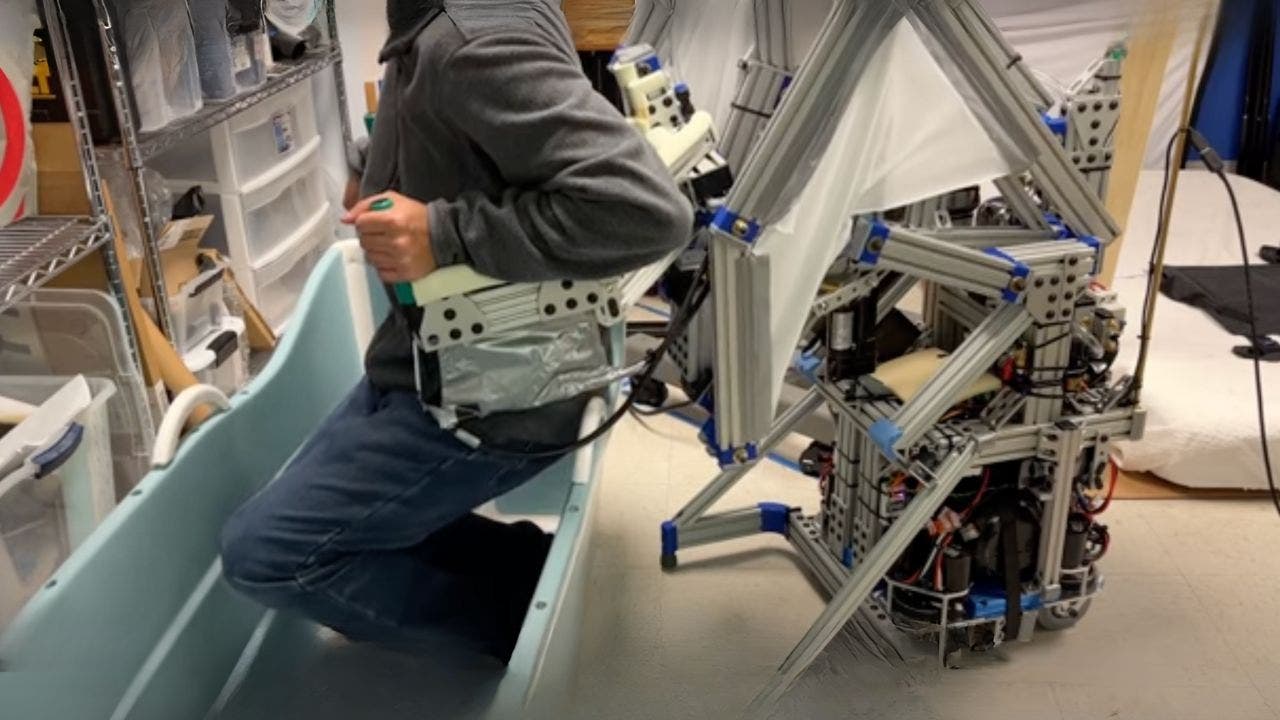Scientists discover rare, thriving octopus nursery – and perhaps a new species

As it happens6:30 pmScientists discover rare, thriving octopus nursery – and perhaps a new species
Beth Orcutt will never forget the moment she witnessed a baby octopus hatch in the deep sea.
The marine scientist was leading a Schmidt Ocean Institute expedition to study the ocean depths off Costa Rica using a remote-controlled vehicle when her team spotted the tiny mollusk.
They weren’t looking for baby octopuses. Until then, scientists weren’t even sure it was possible for an octopus embryo to survive in such a seemingly inhospitable environment.
“It was very, very exciting,” Orcutt, a senior scientist at the Bigelow Laboratory for Ocean Sciences in Maine, told me. As it happens host Nil Koksal. “The whole control room erupted with excitement.”
The expedition has confirmed the existence of two healthy octopus farms — one in an area called the Dorado Outcrop, and another about 30 nautical miles away — where dozens of females congregate to incubate their eggs near hydrothermal vents.
The findings double the number of octopus nurseries known to scientists, challenge previous assumptions about how the creatures reproduce and highlight the importance of underwater vents and seeps to marine life development.
In addition, the octopuses breeding off the coast of Costa Rica may belong to a previously unidentified species.
LOOK | Scientists may have discovered a new octopus species near Costa Rica:
Not so lonely after all
Zoologist Michael Vecchione, who was not involved in the expedition, says octopus farm discoveries are controversial in the marine science community.
That’s because octopuses, he says, are solitary creatures. They spend most of their lives alone, and until about a decade ago were only seen brooding and hatching their eggs on their own.
But that story was challenged when scientists first encountered a group of more than 100 breeding female octopuses at the Dorado Outcrop in 2013.
At the time, the scientists saw no viable embryos in the octopus eggs, and a subsequent visit a year later yielded the same results.
“There was some speculation that the octopuses had made a terrible mistake, leading them to believe that the environment was not suitable for egg development,” Vecchione, the curator of cephalopods at the National Museum of Natural History in Washington, D.C., told CBC.
When Orcutt and the expedition team returned to the Dorado Outcrop this year, they expected to find more eggs, but no babies.
“We were very surprised when we saw not only embryos, but the actual babies being born,” she said.
Not only did the team confirm that the Dorado Outcrop farm is healthy and functional, they also discovered another octopus farm about 30 nautical miles away.
At least two other such nurseries are known to scientists – one found on California’s Davidson Seamount in 2018, and another was discovered off Canada’s west coast this summer.
“I think it’s pretty clear now that it’s an important reproductive strategy,” Vecchione said.

The nurseries in Costa Rica and California contain members of the genus Mouse octopus.
Orcutt says they were able to collect specimens of the creatures during the recent expedition, and they now suspect those at Dorado Outcrop belong to a previously unrecorded species. Mouse octopus.
If they are right, it will be one of dozens of new species discovered on deep-sea expeditions in recent years.
A source of ocean life
The BC farm is located near a cold seep, a crevice on the ocean floor from which hydrogen sulfide, methane and other hydrocarbon-rich liquids and/or gases escape.
The other nurseries are located near hydrothermal vents, crevices in the sea floor that drain water warmed by geothermal energy.
“We think warmer water makes the eggs develop faster, which is why the octopus has adapted to live in a somewhat stressful environment,” Orcutt said.
She noted that a study last month found that some octopuses and cuttlefish can cope with the cold by changing their bodies on a molecular level. literally edit their own RNA.
“We’re really learning that octopus can teach us a lot about how to survive and adapt.”
Octopuses aren’t the only marine life the expedition found near the vents. Teams in BC and Costa Rica also found skate farms and other ocean critters.
Verena Tunnicliffe, a marine biologist at the University of Victoria and a Canadian research chair in deep-sea research, says these findings play the important role under water vents in sustaining marine life.
“The vents and seeps support high local productivity that is likely an attractive nursery … for hatched octopuses and skates to feed,” she told CBC in an email.
“These animals are important apex predators in the ocean that maintain a balanced food chain. Therefore, it is important to consider the role of conservation measures in sustaining these ecosystems.”

The Schmidt Ocean Institute says the expedition’s Costa Rican scientists are now working to determine whether the vents they studied should be designated as marine protected areas to protect them from deep-sea fishing and mining.
“You have these really unique organisms that clearly have a successful nursery. And if something were to affect those places, you could really hurt that species’ ability to survive,” Orcutt said.
The team will head back to the area in December to explore further — and Orcutt says she’s excited to see what they discover next.
“I’m sure we’re going to find new cool stuff,” she said.




